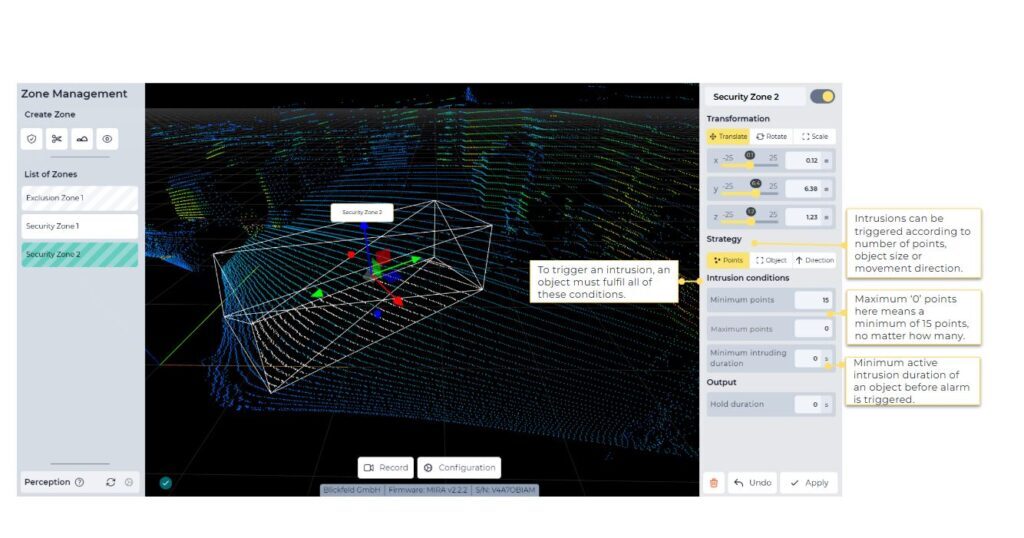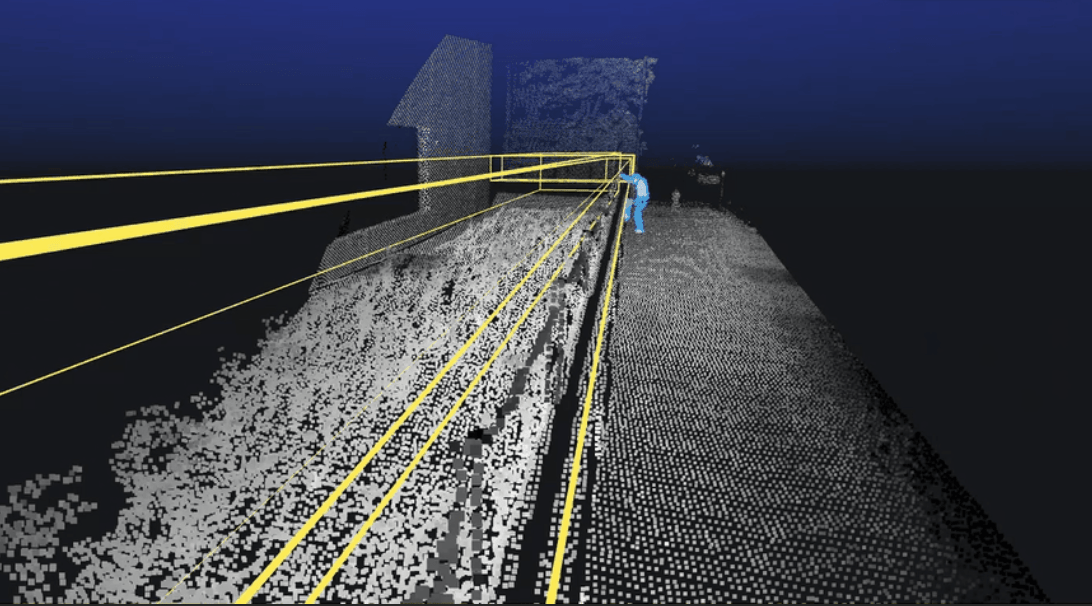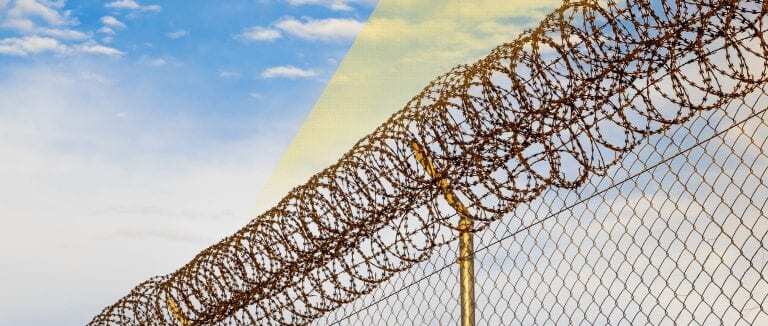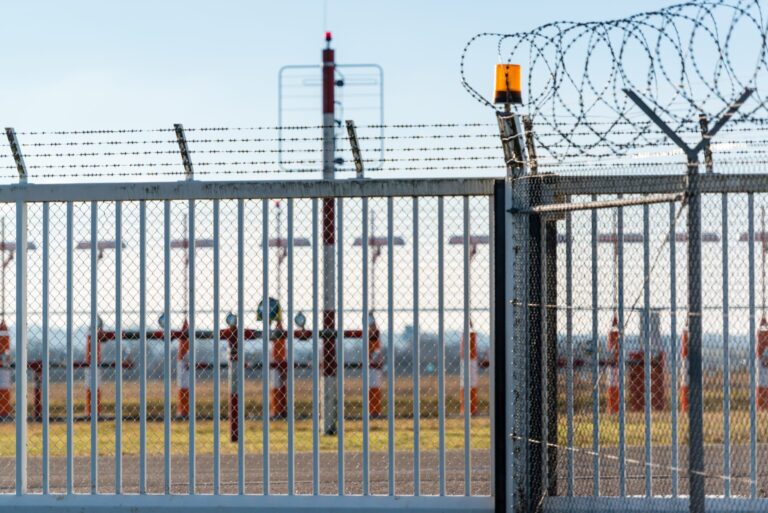False alarms are an increasing concern in physical security, especially for businesses that rely on consistent monitoring in outdoor areas. Repeated false alerts not only consume valuable time and resources but can also lead to “alarm fatigue” among security personnel, where frequent non-critical alerts make it harder to respond to real threats effectively.
With advancements in 3D LiDAR technology, the approach to reducing false alarms is evolving. Unlike conventional systems, 3D LiDAR uses high-frequency laser pulses to create detailed, volumetric images of monitored areas. This live, three-dimensional data allows for precise detection and classification of objects, minimizing the likelihood of unnecessary alarms while maintaining accurate, reliable monitoring.
Understanding the Sources of False Alarms
Reducing false alarms requires addressing multiple sources of inaccurate detections, including environmental conditions, lighting variations, and minor disruptions from animals or insects.
Environmental Factors
Outdoor security systems often encounter challenges due to weather and other natural conditions. Wind, rain, snow, and fog are frequent sources of unintended triggers. For example, strong winds might cause branches to sway or debris to move across detection zones, and rain or fog can obscure visibility, leading to potential misinterpretations. Moving shadows or slight shifts in surrounding vegetation also add complexity in perimeter security, where these incidental movements may be mistaken for security threats.
Lighting Conditions
Lighting changes present another potential source of false alarms, particularly in environments where natural and artificial lighting vary throughout the day. Security systems may find it challenging to maintain accuracy in low light, overly bright conditions, or when sudden lighting changes occur, such as from passing headlights or fluctuating sunlight. Lens flare, which results from strong light sources striking the lens at certain angles, can further distort the view and lead to misinterpretations within detection zones. These lighting-related factors can contribute to inaccurate readings or false alerts.
Small Animals or Insects
Minor intrusions from wildlife, such as birds, squirrels, or stray pets, can easily trigger alarms, especially in outdoor settings. Insects can also create disturbances, especially when they land or crawl near sensors, occasionally being misinterpreted as larger objects in motion. While some filtering technologies can help mitigate this, small animals and insects remain a common source of false positives in outdoor security.
Self-Monitoring Features
Blickfeld smart security LiDAR sensors are equipped with sophisticated self-monitoring features that enhance their reliability and security. These devices use an internal Inertial Measurement Unit (IMU) to detect and alert operators if the unit is moved or repositioned, which helps identify potential sabotage attempts. Additionally, Blickfeld’s security LiDAR constantly assesses its optical performance to ensure that it hasn’t been covered or obstructed, maintaining its functionality. If any malfunction is detected—such as power, network, or other errors—the system can trigger a warning, allowing for rapid response and minimal downtime.
How LiDAR helps in Reducing False Alarms
By leveraging three-dimensional detection and advanced object classification, LiDAR effectively distinguishes between real security threats and benign environmental movements, significantly reducing false alarms.
Environmental Factors
LiDAR’s precision in measuring distances and shapes enables it to differentiate between environmental factors and genuine security threats.
- Wind and Swaying Objects: LiDAR’s volumetric detection capability analyzes the space that objects occupy, filtering out irrelevant movements from elements like swaying branches or blowing leaves. This focus on object shape and spatial presence allows LiDAR to reduce false alarms due to these minor, surface-level movements.
- Rain, Snow, and Fog: Unlike camera systems, which may be affected by rain, snow, or fog, LiDAR’s laser pulses are minimally impacted by weather, providing consistent detection without interference. Weather-resistant and waterproof designs further enhance LiDAR’s reliability, ensuring it maintains accuracy even in extreme weather conditions.
Lighting Conditions
LiDAR, as an active measurement system with its own intrinsic light source, operates independently of visual light, making it reliable in variable lighting situations, day or night.
- Low Light and Night Conditions: LiDAR performs effectively in total darkness, detecting intrusions based on spatial presence without the need for infrared or external light sources. This eliminates the risk of false alarms due to shadows or reflections that often interfere with traditional cameras.
- Dynamic Lighting: Sudden changes in lighting, like headlights or spotlights, do not trigger false alarms in LiDAR systems. By focusing on the actual spatial presence of objects, LiDAR provides consistent, accurate detection that is unaffected by rapid light shifts.
Animals and Insects
LiDAR technology allows for the classification and size analysis of detected objects, preventing false alarms triggered by small animals or insects.
- Size and Motion-Based Object Analysis: LiDAR can differentiate objects by analyzing their size and movement patterns, determining which are legitimate threats and which can be ignored. This ability allows the system to filter out small animals like birds or squirrels and minor disturbances from insects, ensuring alerts are generated only when significant intrusions are detected.
- 3D Zone Customization: LiDAR’s advanced 3D zoning capabilities allow for tailored security configurations. Zones can be adjusted with parameters such as track length and object presence duration, so alarms are triggered only when an object behaves in a manner consistent with a genuine security threat. This flexibility further minimizes false alarms from non-threatening movements.
- Resilience to Lens Disturbances: Where cameras may be obstructed by insects or debris on the lens, LiDAR operates independently of clear optics. This sensor-based detection guarantees continuous functionality, even when minor disturbances affect the surrounding environment.
Integration with Existing Systems
Blickfeld QbProtect can integrate seamlessly with leading Video Management Systems (VMS) such as Milestone and Senstar Symphony. This integration offers enhanced situational awareness and real-time visualization by directing PTZ (pan-tilt-zoom) cameras toward detected intrusions. Thanks to standard Ethernet connections, LiDAR installation is straightforward, and it complements existing camera systems to enhance security capabilities without increasing operational complexity.

Conclusion
For businesses and organizations facing costly, frequent false alarms, LiDAR technology offers a forward-thinking alternative. By addressing the main sources of false alarms—environmental factors, lighting conditions, and small animals or insects—LiDAR provides dependable and accurate monitoring, helping security personnel focus on real threats and respond efficiently.
By integrating 3D LiDAR technology, organizations can significantly reduce false alarms, improve security operations and enhance overall security with intelligent, state-of-the-art detection technology.






